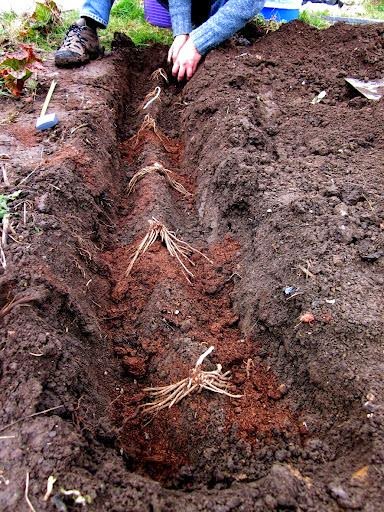Loved for its luscious young shoots, asparagus is one of the first crops of the spring harvest. Growing asparagus is also a boon to your health, as this perennial vegetable is rich in B vitamins, vitamin C, calcium, and iron. And it just so happens that freshly harvested spears are much more tender and flavorful than store-bought asparagus.
Guide to growing asparagus at home in an easy way
These succulent stems, called asparagus, only appear briefly in late spring, but once established, they emerge for many years with very little maintenance. Tender stems appear in late spring and can be harvested for several weeks.
This perennial plant grows in the same place for up to 20 years, so you have to choose carefully where they will be located. It prefers a sunny, protected place with well-drained soil, improving before planting with abundant organic matter.
They are usually grown from young bare root crowns, planted in the spring or they can be planted as container grown specimens at any time of year, always well-watered.
For more productive plants, choose only male varieties. If you want a large number of plants and are willing to wait for them to grow, asparagus can also be grown from seed.
Sow the seed under cover in late winter in seedbeds and then plant the seedlings in the spring once they are hard enough.
New crowns should be allowed to establish for at least two years before harvest. Keep the plants well-watered throughout the summer, mulching with organic matter in the fall, and applying a balanced granular fertilizer in the spring, before and after harvest. During the summer, support fern growth with canes, and keep the plants well weed. In late summer, cut off yellowish growth 1 inch above the ground, and clean up plant debris.
Asparagus varieties to try
Male hybrid asparagus (M) are the best option, since they do not lose energy producing seeds, giving stronger crops. Most named varieties are sold as plants or bare root crowns, including: ‘Ariane’, ‘Backlim’ F1 (M), ‘Connover’s Colossal’, ‘Gijnlim’ (M), ‘Jersey Giant’, ‘Pacific Purple’ and ‘ Theilim’F1 (M).
Sowing the asparagus
Follow these two easy steps to successfully grow and harvest asparagus:
Dig an 8-inch-deep trench, add rich organic matter, and make the base a small mound. Lay the crowns bare root, spacing 12 inches apart, and extend the roots. Cover with soil and water.
Asparagus harvest
You can’t really start harvesting your asparagus until the third year after it’s been planted. They need that time to establish themselves and build their root systems. This is especially true in the first year of planting when the shoots will probably not be very large.
You can harvest a few spears in the second year of growth. The plants are not fully mature, so let them grow uninterrupted after the initial harvest.
In the third year, he begins to harvest spears the size of a finger and about 8 inches long. You can pluck the spears or cut them with a knife, just below the ground line. If you use a knife, be careful not to also cut the subsequent shoots that are still underground and have not yet penetrated.
Harvest for about four weeks in the third year. In subsequent years, the shoots will continue to emerge from the ground throughout the spring. After you’ve harvested for a couple of months and the weather starts to warm up, the shoots will start to get thinner.
At this point, allow the plants to grow into their mature fern foliage that will feed the roots for next year’s harvest. Asparagus plants can continue to produce for 20 years or more.
Be on the lookout for these pests
The slugs and snails emerging stems are eaten in the spring and can be particularly damaging. Apply slug pellets, use beer traps, or form sandy barriers around plants.
Asparagus beetle larvae, and adults as well, can feed on stems and foliage, weakening plants. Destroy them on the spot. Spray severely affected plants with a suitable natural pesticide.









